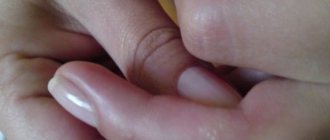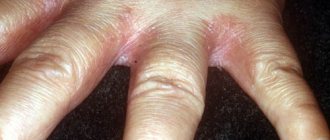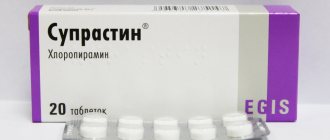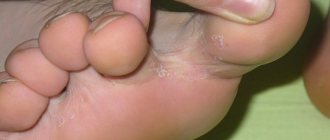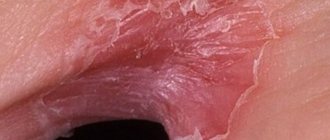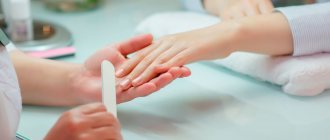What are warts and papillomas
This is the name for formations on the skin and mucous membranes that look like nodules or papillae. They are caused by the human papillomavirus (HPV), which has many different strains. They can also look different: the size of the growths varies from microscopic to two centimeters in length, color - from almost white to dark brown.
It is believed that this virus is contained in the body of more than 70% of the world's population, but in most cases it does not manifest itself. Decreased immunity can lead to the appearance of warts and papillomas. The disease can also be triggered by stress or bad habits (smoking, drug use, alcohol).
Causes of plantar warts
Plantar warts are caused by the human papillomavirus (HPV). This is the same virus that causes warts on other parts of the body. Plantar warts often occur on the weight bearing points of the feet (that is, pressure points), such as the heels or balls of the toes. As a result of pressure, plantar warts can grow inward, forming a callus.
In most cases, plantar warts do not pose a health threat and usually do not require special treatment.
However, plantar warts can be uncomfortable or cause pain when walking. If home remedies for plantar warts are ineffective, you should see a doctor to have them removed. Unfortunately, it is almost impossible to determine how and when a virus infection occurred.
The human papillomavirus is everywhere. The main mode of transmission is from person to person, but you can become infected with HPV through contact with surfaces that have the virus on it. The warm, moist environment inside shoes or on the floor of a public pool, gym or shared shower room is particularly conducive to the spread of the virus.
Upon contact with a contaminated surface, the virus enters the skin, and the smallest scratch or cut on the fingers or toes is enough for the virus to enter the body. The incubation period of the virus ranges from several weeks to several months. After this period, one or more warts may appear on the body.
Fortunately, as you age, the likelihood of developing new warts decreases, due to the body's stronger immune response to the virus.
What do warts between the toes look like?
Photo of warts between toes
The formation of benign growth tissue occurs in a special way. Initially, the virus integrates into the cell and promotes its mutation. It turns off the natural division control mode and provokes the uncontrolled creation of new modified cells, from which neoplasms are gradually formed. For some time, during the incubation period, the HPV population increases depending on the strength of the immune system. The weaker the human body, the shorter this period will be. This is followed by a subclinical stage, during which new tissue is formed. A person may already be the source of the disease, but does not yet have external manifestations. Next, the body of the wart emerges between the toes on the surface of the skin. Growth progression is observed. Appearance and size depend on the variety.
Types of warts between toes:
- Plantar warts . Their origin most often occurs in places of strong pressure and frequent friction with shoes, i.e. on the side of the thumb and little finger, as well as on the lower surface. However, this species is characterized by strong growth. Dimensions can even reach several centimeters in width. The structure is characterized by increased density, so the growths are strongly felt when pressing and walking. The rough body of the wart between the toes leads to severe pain. The surface is distinguished by the presence of a noticeable layer of keratinized particles in color from whitish to dirty gray. Around the growth, the skin also becomes slightly thicker and acquires a whitish or yellowish tint.
- Vulgar warts . The outer surface layer also has a noticeable stratum corneum. A vulgar wart between the toes noticeably protrudes like a dome above the skin by 3-4 mm, and is therefore subject to strong friction and injury during hygiene procedures. The structure is compacted. The outlines are round. The diameter is usually up to 4 mm. May be multiple.
- Flat warts . They look like flat growths of a pink or yellowish tint. Characterized by blurry outlines of a round or irregular shape. Diameter - up to 10 mm. They almost always affect large areas of skin and grow together. More often they appear during the period of youthful natural hormonal correction and can disappear without a trace without treatment. In addition, such growths in this part of the integument occur very rarely. Because of this, there is practically no need to worry about how to get rid of warts between the toes.
Sometimes one or another type of wart can grow into the periungual space and grow under the nail plate. In this case, it is highly not recommended to start the course of the disease, otherwise you may lose your nail.
The main symptoms are pain, itching, discomfort, increased sweating. In advanced forms, swelling of nearby tissues, redness, and burning may occur. If the course is unfavorable, there is a danger of the formation of cancer cells.
When the growth changes color or grows very quickly, fluid or blood appears from it, you should consult a doctor and decide how to treat foot warts between the toes safely and effectively.
- See also what a chicken wart on the leg looks like
Origin of warts and transmission of infection
Warts are nothing more than an ordinary papillomavirus that parasitizes the outer layers of human skin. According to modern data, several types of this virus are distinguished, each of which lives and reproduces primarily in its favorite places. For example, human papillomavirus (HPV) types 2 and 3 are more common on the skin between the fingers and on the hands. Such warts are usually called vulgar.
Other types of virus:
- HPV – types 1, 2 and 4, called plantar;
- HPV – type three, causes the appearance of flat warts;
- HPV types six and eleven cause the appearance of genital warts.
The human papillomavirus invades the epithelial cells of the skin, then penetrates the cell nucleus, where it multiplies and develops. According to various sources, from 10 to 20% of cases, the penetration of the virus into skin cells is accompanied by a change in its structure and the appearance of modified cancer cells.
This is especially true for HPV types 6 and 11, which can cause cervical cancer. Usually people have increased resistance to this virus. But in cases of decreased immunity and resistance to viruses, anyone can become infected with this infection.
Mechanism of transmission of infection
The virus is transmitted primarily through contact.
When shaking hands, general use of household appliances, if a person has the slightest damage to the skin, the virus instantly penetrates through it and penetrates into skin cells
. (Common) vulgar and plantar warts are transmitted in this way. Genital warts, or, as they are commonly called, genital warts, are transmitted almost exclusively through sexual contact, because they are localized in the genital area in both men and women.
Causes of papillomas between the toes
The process of papilloma formation in this area is triggered by a virus of the same name. Growths appear after it enters the human body and is activated under the influence of various factors. The risk of HPV infection occurs in case of tissue damage, during unprotected sexual contact, during a handshake, or when using the patient’s belongings.
The closer the connection with the carrier, the greater the chance of papilloma appearing between the toes, and especially children, the elderly, and pregnant women should be prudent. The likelihood of the virus entering the body increases during childbirth and in humid conditions in which it thrives. Therefore, the risk group includes lovers of saunas, baths, swimming in pools or reservoirs.
The papilloma virus goes through several stages of its development. At the very beginning it is not dangerous, but as it progresses, its negative impact on the body increases. As a result, the immune system cannot cope with this activity, allowing HPV to trigger the formation of growths, including between the toes.
Here are the reasons that contribute to the formation of papilloma between the toes:
- Vitamin deficiency . Problems arise with an acute deficiency of vital substances - ascorbic and folic acid, vitamin B12, iron, zinc and potassium. Their deficiency leads to the development of persistent immunodeficiency and pronounced anemia, reducing the degree of protection of epithelial cells. Vitamin deficiency is a consequence of an unhealthy diet that is poor in the substances listed above. This applies to people who do not like raw fruits and vegetables, berries and herbs.
- Gastroenterological diseases . First of all, the cause of the formation of papilloma between the toes may be gastritis or colitis, which prevent beneficial substances from being absorbed and absorbed in the volumes necessary for the body. As a result, problems with hemoglobin and immunity appear, which negatively affect the ability to resist viruses. For the same reason, people with stomach or duodenal ulcers should be attentive to themselves.
- Otolaryngological diseases . The risk of papilloma appearing between the toes is in those who suffer from laryngitis, pharyngitis, tonsillitis, tonsillitis, sinusitis and other similar pathologies of viral origin. This can be explained by the ability of the infectious agent that caused it to suppress the immune system.
- Chronic stress . Nervous shocks, emotional stress, rare physical and moral rest - all this contributes to papillomas between the toes. The likelihood of this is even higher for people whose work involves mental work. It’s not easy for members of unfriendly teams in which scandals constantly break out. Misunderstanding on the part of the family - parents, spouse, children, etc. - also leaves a serious imprint.
- Treatment with antibiotics . These drugs are harmful because in a short time they destroy not only the pathogenic intestinal microflora, but also the beneficial ones. The necessary bacteria, dying, can no longer properly protect the body from damage by the virus, and it, freely penetrating into them, destroys the cells. As a result, optimal soil is created for the formation of papilloma between the toes. In this case, only long-term such therapy for more than 3-4 weeks can cause harm.
The list of other reasons for the appearance of papilloma between the toes can include chronic lack of sleep, low physical activity, ignoring the rules of personal hygiene, the use of low-quality care products, high blood cholesterol and excess weight.
- See also the causes of papillomas in men
Signs of plantar warts
Obviously, warts are not the only type of growth that can appear on the soles or toes. How to distinguish warts from other skin formations?
The main symptom of plantar warts is the localization of pain and areas of increased sensitivity. If you experience pain or discomfort when you press on the sides of the growth (rather than when you press directly on the growth itself), it most likely is a wart.
Another characteristic feature is the appearance of the formation. Plantar warts are flat and rough, usually with distinct edges. They are flesh-colored or brown with a small black spot in the center (these are blood vessels).
Symptoms and diagnosis
Warts on the fingers look like round-shaped formations, slightly rising above the surface of the skin. They are hard to the touch, often rough and lumpy.
If the growth is injured or the patient tries to eliminate it at home, the formation takes on the appearance of a sea sponge with many tentacles.
The color varies from light pink (almost flesh-colored) to dark gray. Black dots visible through the skin indicate blockage of blood vessels. It is possible for closely lying growths to merge into large plaques. Overgrown skin papillomas bring pain and discomfort when wearing narrow, tight-fitting shoes.
A characteristic symptom of growths on the feet are so-called kissing warts located on adjacent toes. They often form near the little finger.
The final diagnosis is made by a dermatologist based on an external examination of the callus. If necessary, additional tests are prescribed.
Treatment of plantar warts
Plantar warts often do not require specific treatment. In most cases, warts go away on their own without any treatment within a few years. However, if they cause pain or spread throughout the entire sole, you should consult a doctor. It is much easier to treat a few small warts than a group of large warts.
Plantar warts can stubbornly resist treatment. Therefore, most treatments require patience, persistence and repetition.
People with diabetes, people with nerve damage in the legs or weakened immune systems should undergo treatment under the supervision of a doctor. As a rule, treatment begins with the least painful methods that have no side effects and do not leave scars. Scars on the soles of the feet can be painful and are usually permanent.
Removing warts on the sole
Currently, there are many effective and safe treatments for plantar warts. However, it should be noted that in some cases, reliable removal of warts is complicated by the fact that the human papillomavirus penetrates into the deepest layers of the epidermis (the basal layer).
Treatment of warts is necessary in cases where:
- the wart hurts;
- the wart bleeds;
- large wart;
- the color of the wart is uneven (for example, inclusions have appeared in it);
- there is rapid growth dynamics of the wart.
There are the following methods for removing plantar warts:
- cryodestruction;
- laser coagulation;
- electrocoagulation;
- radio wave surgery;
- surgical excision.
The cryodestruction method involves treating the wart with liquid nitrogen at a temperature of minus 196 degrees
This method involves treating the wart with liquid nitrogen at a temperature of minus 196 degrees. Cryodestruction is characterized by the fact that when a wart is frozen, the area of skin affected by viruses is destroyed, followed by stimulation of the body’s immune forces.
However, it should be noted that if a wart appears and exists for up to six months, then the effectiveness of its removal is 84%. While the effectiveness of removing warts that have existed for more than six months is reduced to 39%.
The cryodestruction procedure can be performed:
- usually (liquid nitrogen is applied until a light halo with a diameter of two millimeters appears around the wart);
- aggressively (after a light halo appears around the wart, liquid nitrogen continues to be applied for another five to twenty seconds).
Research has shown that the aggressive method of freezing a wart is more effective than the conventional method, but the disadvantage is that it is more painful.
After removal of the wart, hyperemia (redness) of the skin is observed at the site of exposure, followed by the formation of edema. After a few hours, a blister forms on the affected area (may contain hemorrhagic or serous fluid), and approximately six to seven days after the blister dries, a crust forms in its place, which falls off on its own within two weeks.
After removing a wart, the following recommendations should be followed:
- the formed bubble at the site of the wart should not be opened;
- the affected area should not be covered with adhesive tape;
- It is recommended to bandage the site of exposure loosely, without tightening, with a sterile bandage to prevent mechanical damage and contamination of the affected area;
- It is recommended to treat the affected area with salicylic alcohol 2% twice a day;
- try to avoid getting water into the affected area.
| Advantages of the method | Disadvantages of the method |
| tissue healing occurs without scarring | if exposure to liquid nitrogen occurs superficially, then there is a high probability of relapse (re-formation) of the wart |
| the procedure is performed without the use of local anesthesia | After the procedure, local hypo- or hyperpigmentation may be observed |
| Removing a wart using this method takes one to two minutes | if deeper cauterization occurs, there is a risk of scarring |
When removing a wart, the laser beam simultaneously seals the vessels, thereby preventing the development of bleeding at the site of exposure
Removing warts using a laser beam is one of the most common treatment methods today. This method is characterized by layer-by-layer cauterization of the affected area, which allows you to control the depth of exposure. Also, when removing a wart, the laser beam simultaneously seals the blood vessels, thereby preventing the development of bleeding at the site of exposure.
The following laser coagulation methods exist:
- Carbon dioxide (CO2) laser. The wart is exposed to infrared light (wavelength 10,600 nm). The disadvantage of this treatment method is that tissue cauterization does not occur selectively, that is, there is a possibility of damage to healthy tissue. The effectiveness of removing plantar warts using a carbon dioxide laser is 70%.
- Erbium laser. This method is characterized by a shorter wavelength, 2940 nm, which significantly reduces the likelihood of scar formation after tissue epithelization. The effectiveness of this treatment method is 75%.
- Pulsed dye laser. This method is characterized by selective absorption of energy (wavelength is 586 nm) by oxygenated hemoglobin, which primarily destroys the dilated capillaries in the wart, as well as stimulates the immune system, which contributes to effective healing. The effectiveness of this treatment method is approximately 95%.
After laser treatment, a crust forms on the affected area, which disappears on its own within seven to ten days. It is not recommended to tear off the crust or lubricate it with anything (ointments, creams, alcohol solutions). Also, in the first few days after the procedure, you should avoid getting water on the treatment site.
| Advantages of the method | Disadvantages of the method |
| tissue healing occurs without scarring | The disadvantages of this method include only the high cost of the procedure |
| rapid tissue healing | |
| low risk of relapse (recurrence of the disease) | |
| practically does not affect healthy tissue |
The plantar wart is exposed to high frequency current. Cauterization of the affected area should be done under local anesthesia. Thanks to a coagulation loop applied to the affected area of the skin, an electric current is applied to the wart, which leads to its death. Also, the action of high temperatures leads to the soldering of blood vessels, which prevents the development of bleeding.
After the procedure, a dense crust forms at the site of exposure, which disappears on its own within ten days.
After removing a wart, the following recommendations should be followed:
- during the healing period, try to avoid contact with water or soap on the affected area of the skin;
- the formed crust should not be touched or torn off;
- In the first seven to ten days, it is recommended to treat the site of exposure with an antiseptic (for example, Lugol's solution, Iodinol) once or twice a day.
| Advantages of the method | Disadvantages of the method |
| affordable cost of the procedure | used for shallow warts of small size |
| prevents bleeding | when affecting the deep layers of the skin, a scar may remain after tissue healing |
| the procedure takes from a few seconds to one minute | When a wart is removed superficially, it may recur |
This treatment method involves using a special electrode that emits high-frequency radio waves (3.8 - 4.0 MHz). Exposing a plantar wart to high temperatures causes the cells infected with the papilloma virus to evaporate. Also, thanks to cauterization of blood vessels, the use of this method prevents the development of bleeding. After exposure, a crust forms on the affected area of the skin, which disappears on its own within seven to ten days.
During the healing period the following is contraindicated:
- in the first two days after the procedure, you should not wet the cauterization site;
- pick the crust for seven to ten days.
| Advantages of the method | Disadvantages of the method |
| when exposed to the affected area, healthy tissue is practically not affected | high cost of the procedure |
| Once the tissue has healed there is minimal risk of scarring | |
| after treatment, low risk of remission (two to five percent) |
This method is characterized by removing the wart using a scalpel under local anesthesia. After excision of the affected area, sutures are applied, which are removed after seven to ten days.
| Advantages of the method | Disadvantages of the method |
| used to remove large warts | After the stitches are removed, scars may remain on the affected area |
| there is a risk of remission (disappearance of symptoms) of the wart |
General principles of caring for the affected area of skin after wart removal:
- if a crust forms, it should not be touched or torn off;
- limit the entry of water into the affected area;
- after removing a wart, the affected area should not be exposed to direct sunlight;
- Do not apply any cosmetics (for example, cream or lotion) to the affected area of the skin;
- for one to two months after wart removal, it is not recommended to visit public saunas, baths or swimming pools;
- After removing a wart, it is recommended to use vitamins A, C and E, as they promote rapid tissue regeneration (healing) and also stimulate the body's defenses.
Note:
If complications arise after removing a wart (inflammation of the affected area, prolonged healing, scarring), you must consult your doctor as soon as possible.
For all treatment methods, contraindications to the procedure are:
- diabetes;
- the presence of malignant tumors;
- pregnancy;
- infectious and inflammatory diseases near the wart;
- exacerbation of herpes;
- increased body temperature;
- high blood pressure (above 140 per 100 millimeters of mercury).
Ways to treat warts between toes
The benign nature of warts between the toes allows in some cases to go without treatment. However, the presence of unpleasant symptoms, the contagiousness of a person, discomfort from an unsightly appearance and the danger of degeneration into cancer force one to consult a doctor to determine suitable options for combating this disease.
Radical removal of warts between toes
To eliminate the symptoms of the disease, it is necessary to get rid of its external manifestations. Currently, there are several effective instrumental methods for combating benign skin tumors. To find out how to remove a wart between your toes safely and effectively, you should consult a doctor who will make an accurate diagnosis, identify all the risks and recommend the most suitable option.
Modern methods for removing warts between the toes, their advantages, disadvantages and costs:
- Radio wave surgery . A special radio knife delivers a stream of radio waves to skin formations, which excise it almost painlessly. Each blood vessel is coagulated through the same flow, so bleeding does not occur. Along with this, there is no spread of infection. Thanks to this, the relapse rate in the coming months is quite low. In addition, complications almost never appear after such a procedure. Patients note that restoration of the skin after radio wave removal of warts between the toes occurs in less than a week. Price - from 1900 rubles in Russian clinics and from 650 hryvnia in Ukrainian medical institutions.
- Removal with liquid nitrogen . This method involves applying very low temperature liquid nitrogen to the body of the wart between the toes. The procedure is dangerous because the product can freeze not only the tumor, but also healthy cells. As a result, tissue frostbite occurs, which destroys the treated cells. A blister appears, it can become inflamed, red, and swollen. After such manipulation, deep scars may remain, and in the case of thin toes, even bones and cartilage may be injured. Based on this, the doctor may say that cryodestruction of a wart on the foot between the toes is not advisable. The lowest price is 400 rubles or 190 hryvnia.
- Electrocoagulation . Elimination of external manifestations of HPV is carried out due to the burning current. The procedure is painful and produces an unpleasant smell of burnt skin. The person feels severe tingling and discomfort. Often after manipulation, swelling develops and tissue inflammation begins. However, the excision is carried out quite accurately and effectively. The price in Russia is 350 rubles, in Ukraine – 200 hryvnia. Read real reviews about electrocoagulation of papilloma.
- Laser removal . This method is widely popular due to its accessibility, effectiveness, safety and painlessness. It also allows you to shorten the healing time of scars and restore the normal structure of the skin. The laser burns out the wart cells between the toes in a targeted manner. An experienced specialist performs the manipulation with high precision, thanks to which healthy tissue remains intact. The price in Russia is 1000 rubles, in Ukraine – 400 hryvnia. See indications for laser removal of papilloma.
- Surgical excision with a scalpel . It is performed in the operating room under local anesthesia. It has a number of significant disadvantages. Complete removal is carried out with simultaneous excision of healthy tissue; bleeding often occurs during manipulation. There is a need for sutures. Rehabilitation can take quite a long time. There is a danger of infection or spread of HPV to new areas of the integument. Prescribed as a cheaper alternative if the growth is too large to be removed by other methods. The cost in Russia is 450 rubles, in Ukraine - 250 hryvnia.
The price for each procedure varies depending on the clinic, the location and size of the growths, as well as their number.
It is possible to refuse radical removal of warts between the toes if there are contraindications due to concomitant diseases or signs of inflammation or the beginning of the cells degenerating into malignant ones.
Instrumental excision of viral formations should be carried out in combination with drug treatment to reduce the risk of reactivation of the human papillomavirus.
Treatment of warts without surgery
| Name of ointment | Mechanism of therapeutic action | How to use |
| Salicylic ointment | Has an antiseptic and anti-inflammatory effect. It has a keratolytic (exfoliating) effect, which, by softening, dissolving and sloughing off the surface layer of the epidermis, promotes rapid skin renewal. | Salicylic ointment 60% is used to treat warts. Before using the drug, it is recommended to steam your feet and then dry them thoroughly. After this, apply a thin layer of ointment to the plantar wart, and then bandage the treated area. The procedure must be repeated every other day until the warts completely disappear. |
| Oxolinic ointment | Has a pronounced antiviral effect. | To treat plantar warts, three percent oxolinic ointment is used. The drug is applied to the affected areas of the skin, after which waxed paper (coated with a thin layer of wax) is applied to the treated area. The procedure should be repeated two to three times a day. The course of treatment is two to three months. |
| Viferon | Contains vitamin E. Has anti-inflammatory and immunomodulatory effects. It has antioxidant properties (a substance that slows down oxidation), and also enhances cell regeneration (renewal). | The ointment is applied three to four times a day for five to seven days. |
| Riodoxol | Has broad antiviral and antifungal effects. | Before using the drug, damaged skin must be steamed and thoroughly dried. A thin layer of ointment should then be applied to the plantar warts. The procedure must be carried out one to three times a day until the warts completely disappear. |
| Note: if side effects occur (for example, redness, itching, burning), you should wash off the drug with warm water and consult a doctor as soon as possible. |
For single and shallow plantar warts, it is recommended to use traditional methods of treatment.
| Name of the product used | Preparation | Application |
| Acetic acid | It is necessary to purchase acetic acid 70%, Vaseline, and also prepare a pipette for applying the exact dosage. | Before using acetic acid, coat the healthy skin around the wart with Vaseline. Then, using a pipette, apply one drop of acetic acid to the wart. This method should be used once a day until the wart goes away. |
| Garlic infusion | It is necessary to chop three cloves of garlic, and then pour boiling water (50 ml) over the resulting mass. After one hour, the resulting infusion must be filtered and used. | The area of the wart should be lubricated with the resulting infusion once a day until the formation completely disappears. |
| Brine | It is necessary to dissolve one tablespoon of salt in warm water (100 ml) and add one tablespoon of table vinegar (9%). The resulting solution must be thoroughly stirred, and then the pulp of one plum should be dipped into it and left to infuse for two hours. After the time has passed, it is necessary to remove the plum from the solution and grind it into a paste. | The resulting plum pulp must be applied to the wart. For a secure fit, wrap your foot and put a sock on it. This compress must be left for two to three hours. The procedure should be repeated every day until the wart completely disappears. |
| Wormwood tincture | It is necessary to add three tablespoons of dry wormwood to a glass of hot water (250 ml), cover with a lid and leave for two hours. | The resulting solution must be lubricated on the affected areas of the foot three to four times a day until the warts disappear. |
| Lemon peel infusion | It is necessary to remove the peel from two lemons and place it in crushed form in a liter jar. Then add 100 ml of 9% table vinegar to the vessel and close the jar with a tight lid. The contents should be infused for one week, shaking the jar periodically. After the expiration date, the infusion must be filtered. | The resulting infusion must be moistened with warts twice a day until they completely disappear. |
| St. John's wort decoction | For one glass of water (250 ml), add one tablespoon of chopped St. John's wort and boil for 15 minutes over low heat. After cooking, the broth must be cooled and then strained. | The resulting decoction should be applied to the warts three to four times a day until they disappear completely. |
| Note: if any side effects occur, you should immediately consult your doctor. |
To increase the effectiveness of treatment of plantar warts, the following recommendations should be followed:
- carry out daily foot hygiene procedures;
- to strengthen the immune system, vitamins should be taken regularly (for example, vitamins A, E, C);
- use individual shoes (for example, house slippers);
- If your foot skin is dry, you should regularly use moisturizing and nourishing foot creams;
- in public places (bathhouse, sauna or swimming pool) you must use personal slippers and avoid walking barefoot;
- carefully choose suitable shoes (for example, appropriate size, natural materials);
- If your feet sweat excessively, you must use drying agents (for example, Hexamine, Formagel), and also try to select shoes in accordance with the weather.
